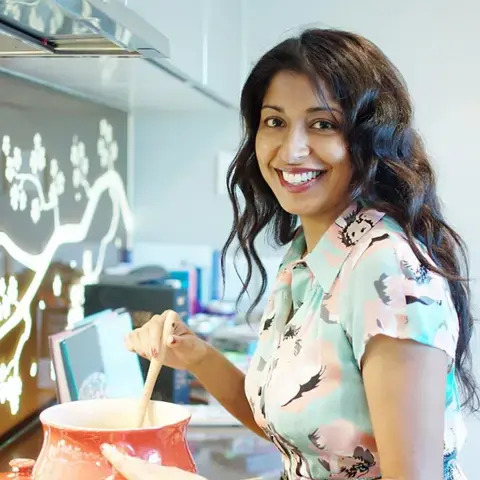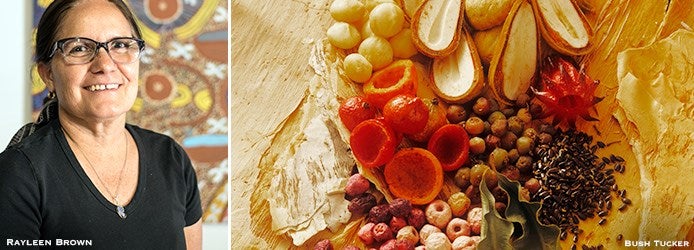A Chef Ahead of His Time
Television chef Mark Olive (The Black Olive), who’s been on screen since 1994 and was the first Aboriginal chef with a cooking show in 2010, has seen this first hand. Olive’s blend of charisma and intelligence has enchanted audiences for years, but admits that much more can be done to support Aboriginal chefs. He’s currently hosting On Country Kitchen with Aboriginal comedian Derek Nannup, cooking up indigenous ingredients.
Olive famously opened The Midden, a Sydney restaurant serving up native ingredients back in 1996 – ahead of its time in many respects. “This was when customers didn’t want to eat kangaroo – it was just too foreign for them!” he says. “With the indigenous herbs and spices, I was able to get some. I’d pick wild berries and lilly pilly. We were using lemon myrtle and wattle seed. But people did not understand it.”
Fast forward twenty years and there are small farms and growers like Mike and Gayle Quarmby of Outback Pride Fresh who supply restaurants across the country. Few people know about the Aboriginal women in the desert, for example, who harvest the natural herbs and bush tomatoes though, often getting paid a pittance, Rayleen explains during a bush walk.
Hope in Sydney
Aunty Beryl Van-Oploo, an Aboriginal elder and lecturer co-owns Biri Biri Café in Redfern, Sydney, a suburb of historical significance to the Aboriginal community. At the local cooking school at the National Centre for Indigenous Excellence, and at 75-years of age, she continues to work with Aboriginal youth – those deemed to have little future in the mainstream system. Many of the students, like Keith Quayle, work at the café, to gain valuable experience before they leave to the hospitality and tourism industry across Australia.












